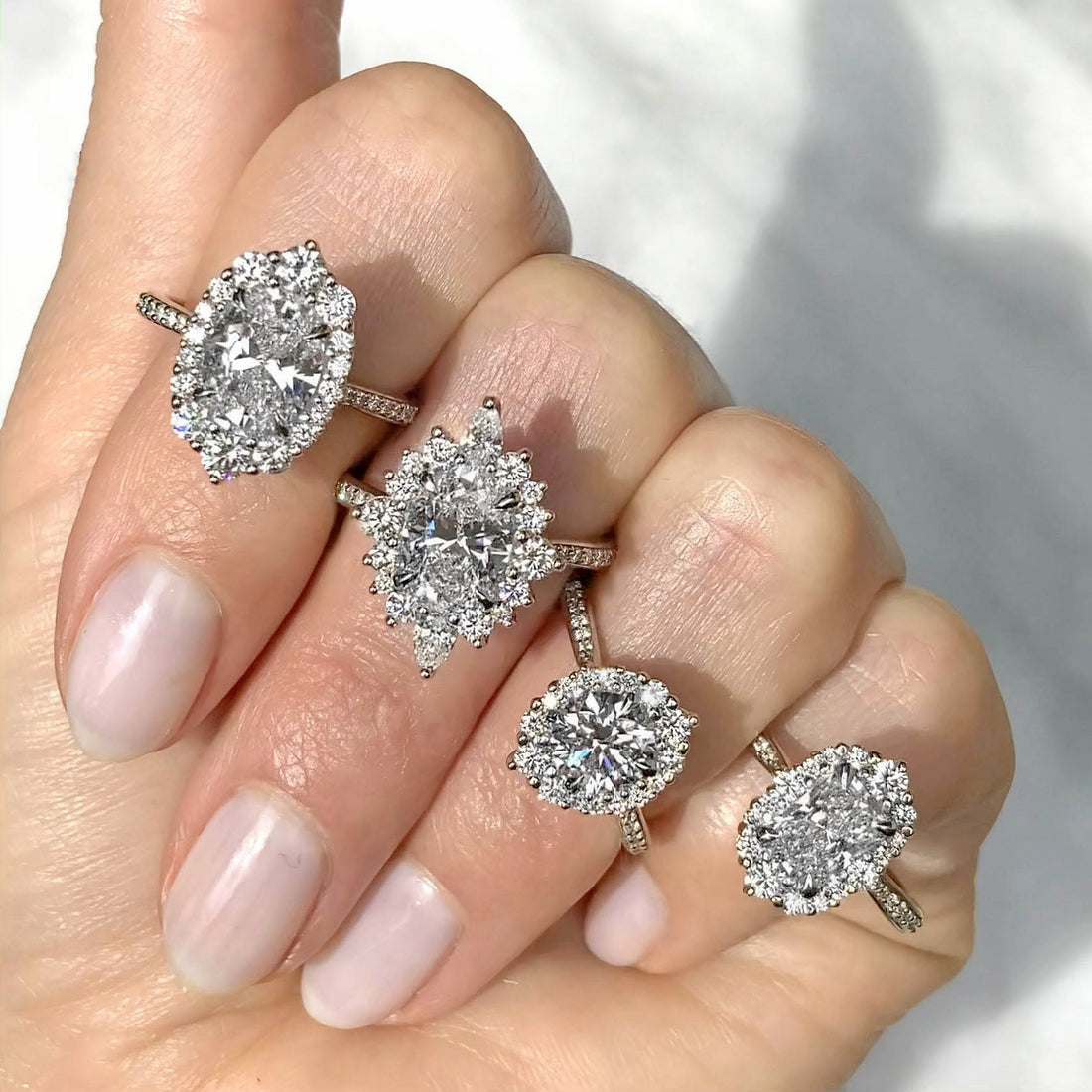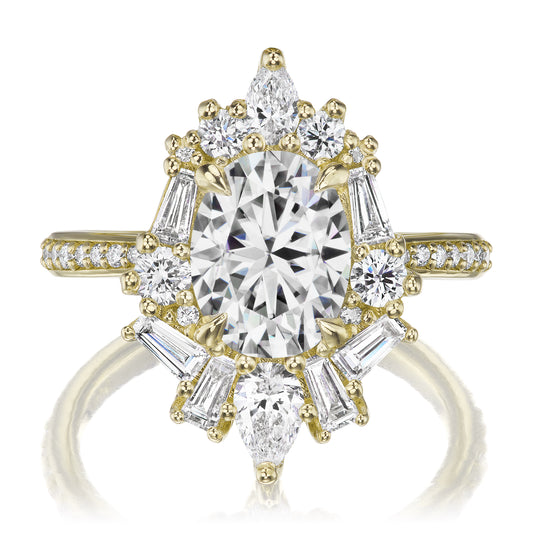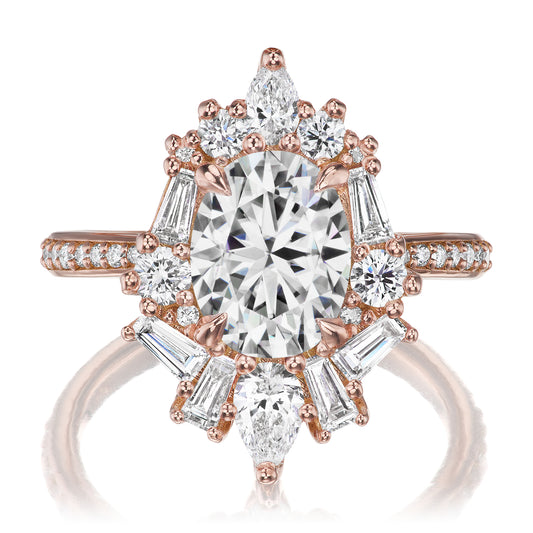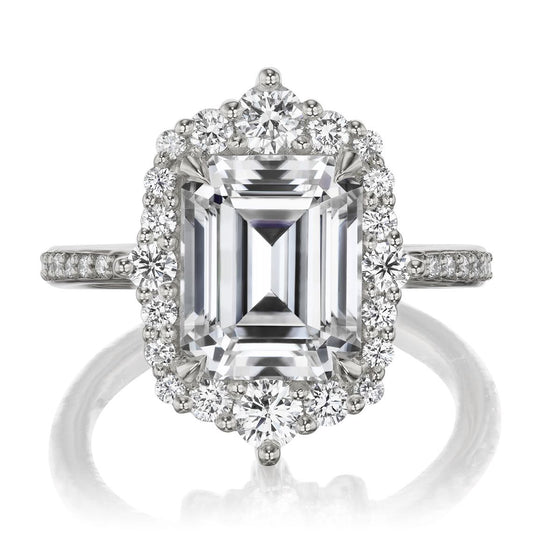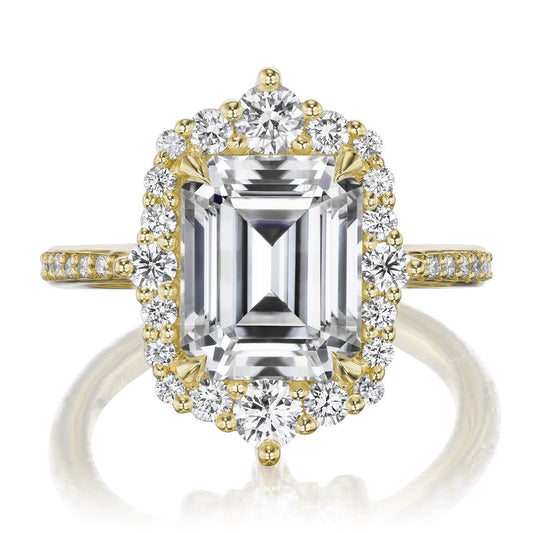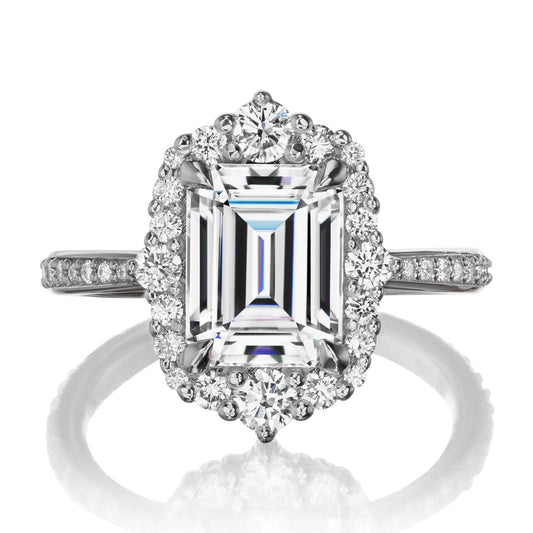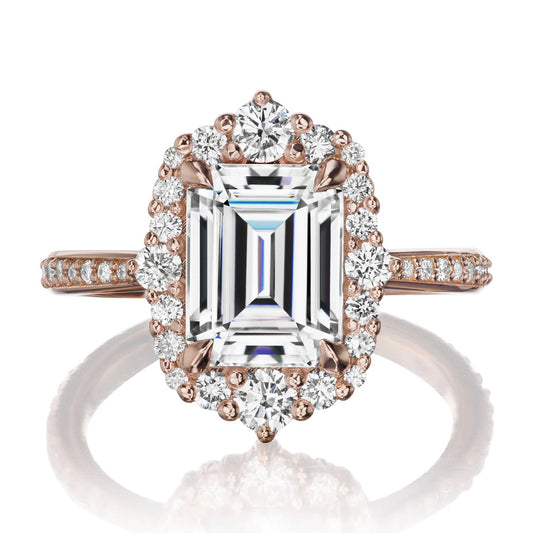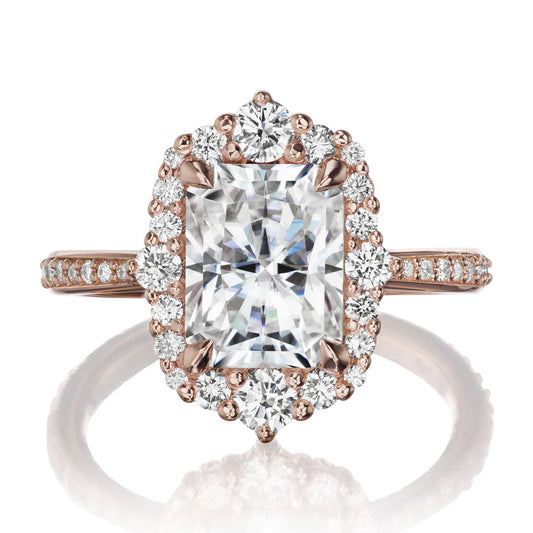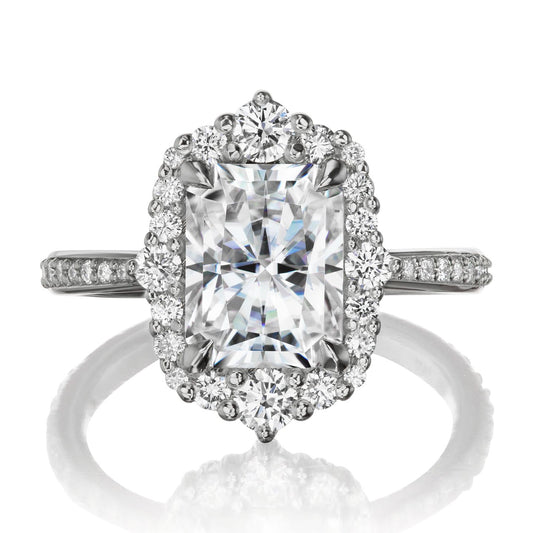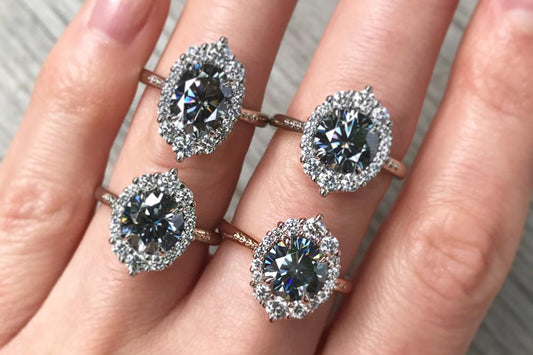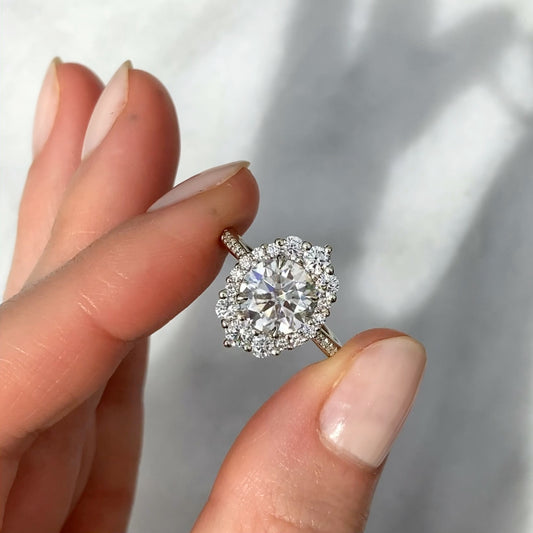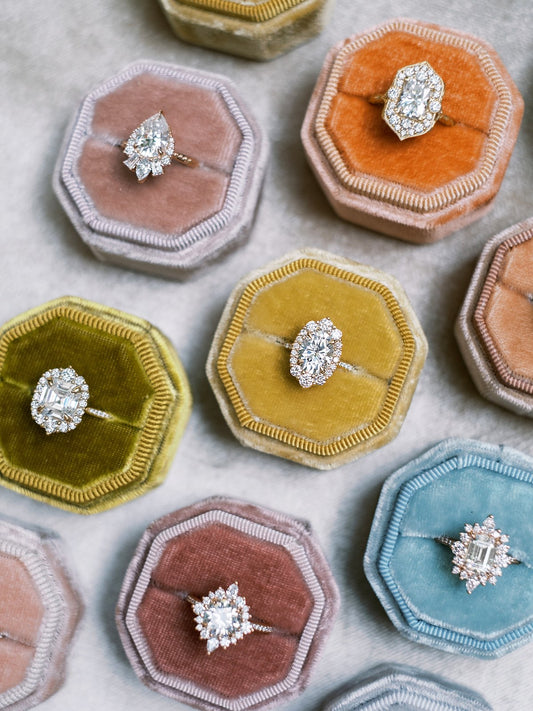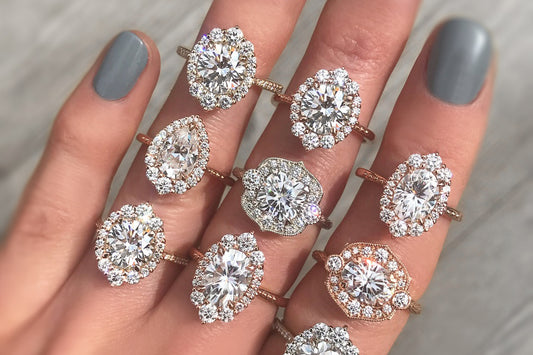White gold is inherently warm in color, and not dead white like platinum. White gold is not found in nature, since the element from the earth is pure yellow gold (referred to as 24k). In order to achieve a whiter hue, other metals are added to the pure yellow gold. This combination of metals is called an "alloy." By definition, 14k gold means that 14 parts of the alloy out of the total 24 parts are gold. The remaining 10 parts in the alloy are other metals. The other metals depend upon the final color you're trying to achieve. For example, 14k yellow gold may have copper, silver, and zinc added so that the yellow color is lightened, but still maintained. Rose gold will have more copper so that the coppery hue is achieved. And white gold will have a white metal, such as nickel or palladium added so that the resulting alloy is whiter.

Although the final color of 14k white gold is whiter than pure yellow gold, 14 parts out of its total 24 parts are still yellow gold. I like to compare it to a bucket paint: It's like adding as much white paint to a bucket of yellow paint as you can. The resulting color will look much whiter, but that yellow paint in the bucket still remains. The same is true of white gold; It will appear whiter but its undertone is still yellow gold.
Why is it that sometimes a white gold ring will turn warmer in color over time?
Sometimes that original warmer color is harder to see since our eyes are distracted by shiny things! Rings often start out polished, and the reflective surface makes subtleties in color hard to see. But as it's worn, the ring's surface becomes scuffed up, and that reflective surface dulls. White gold's inherent color is easier for us to see due to the duller, less distracting surface.
Additionally, although most of the metals in the white gold alloy do not tarnish (turn colors due to exposure to oxygen), there are tiny amounts of metals which can oxidize. This means white gold can tarnish (or "turn") a slightly warmer color with time. Having the ring professionally polished can make it shiny again. But something to keep in mind is that professional polishing removes a layer of metal each time. You wouldn't want to get your ring polished too frequently since it would wear away the gold too quickly. If you prefer a whiter appearance I'd recommend going with rhodium plating rather than frequent professional polishing. That way the ring isn't thinned too early in its life, and the twig's fine texture isn't polished away prematurely.
Rhodium is a metal in the platinum family, so it has that same grey/white color. Many commercially made jewelry will be rhodium plated to look like platinum. One downside to plating is that it requires upkeep by re-plating every year or so. I choose not to plate my white gold for a few reasons. The main reason is that I love the warmer color of white gold, and don't find it to be inferior to platinum's color. And the other is that I don't think it's fair to require clients to re-plate their pieces every year or so without asking them. I believe it should be your choice whether or not you'd like to take on that financial and time commitment.
Though most commercial white gold jewelery is still rhodium plated these days, you'll find that many artists of handmade jewelry choose not to plate pieces. I completely understand that some people prefer a whiter color and would like to plate their rings. Rhodium plating can be done at a local jewelry store or repair shop in your area. Unfortunately, I do not have plating equipment in my studio so I'm unable to offer plating services. But if you love that dead white hue, rhodium plating is a great option for you.

